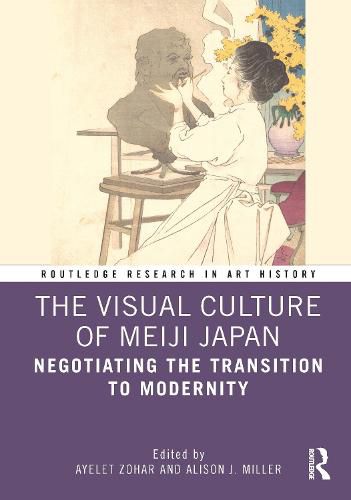Readings Newsletter
Become a Readings Member to make your shopping experience even easier.
Sign in or sign up for free!
You’re not far away from qualifying for FREE standard shipping within Australia
You’ve qualified for FREE standard shipping within Australia
The cart is loading…






This volume examines the visual culture of Japan's transition to modernity, from 1868 to the first decades of the twentieth century.
Through this important moment in Japanese history, contributors reflect on Japan's transcultural artistic imagination vis-a-vis the discernment, negotiation, assimilation, and assemblage of diverse aesthetic concepts and visual pursuits. The collected chapters show how new cultural notions were partially modified and integrated to become the artistic methods of modern Japan, based on the hybridization of major ideologies, visualities, technologies, productions, formulations, and modes of representation. The book presents case studies of creative transformation demonstrating how new concepts and methods were perceived and altered to match views and theories prevalent in Meiji Japan, and by what means different practitioners negotiated between their existing skills and the knowledge generated from incoming ideas to create innovative modes of practice and representation that reflected the specificity of modern Japanese artistic circumstances.
The book will be of interest to scholars working in art history, Japanese studies, Asian studies, and Japanese history, as well as those who use approaches and methods related to globalization, cross-cultural studies, transcultural exchange, and interdisciplinary studies.
$9.00 standard shipping within Australia
FREE standard shipping within Australia for orders over $100.00
Express & International shipping calculated at checkout
This volume examines the visual culture of Japan's transition to modernity, from 1868 to the first decades of the twentieth century.
Through this important moment in Japanese history, contributors reflect on Japan's transcultural artistic imagination vis-a-vis the discernment, negotiation, assimilation, and assemblage of diverse aesthetic concepts and visual pursuits. The collected chapters show how new cultural notions were partially modified and integrated to become the artistic methods of modern Japan, based on the hybridization of major ideologies, visualities, technologies, productions, formulations, and modes of representation. The book presents case studies of creative transformation demonstrating how new concepts and methods were perceived and altered to match views and theories prevalent in Meiji Japan, and by what means different practitioners negotiated between their existing skills and the knowledge generated from incoming ideas to create innovative modes of practice and representation that reflected the specificity of modern Japanese artistic circumstances.
The book will be of interest to scholars working in art history, Japanese studies, Asian studies, and Japanese history, as well as those who use approaches and methods related to globalization, cross-cultural studies, transcultural exchange, and interdisciplinary studies.